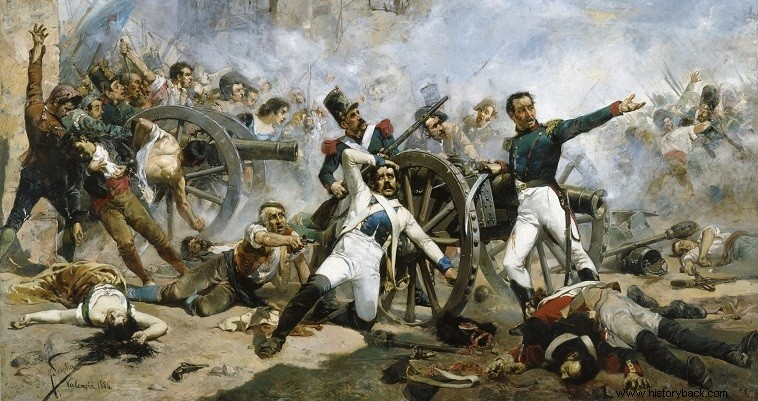
Madrid was captured by Napoleon's French on March 23, 1808. The French had initially appeared as friends and protectors, but soon revealed their true colors. Napoleon had, in effect, arrested the Spanish kings, father and son. Napoleon ordered his marshal and sister-in-law Joachim Myra to capture the daughter of the Spanish king Charles D, along with his youngest son.
This was the occasion that overflowed the cup of the wrath of the Spaniards. On May 2, 1808, the royal palace in Madrid was surrounded by citizens demanding that the French not arrest Prince Francisco. Myra responded by sending a battalion of Imperial Guard grenadiers and a detachment of artillery into the palace to disperse the crowd.
As time went by, the tension escalated and finally the French opened fire on the unarmed crowd. The Spanish reacted and soon street battles began with the French conquerors. Myra ordered the violent suppression of the rebellion and the French troops charged furiously against the Spanish who were also fighting with wild fanaticism.
Prisoners were not arrested, on either side. Instead the gruesome death of the opponent was the norm. Gradually the French gained ground as they had managed to barricade the Spanish troops stationed in the city in their barracks, preventing them from taking part in the rebellion.
An exception was the gunners of the Monteleone barracks who took part in the conflict led by Colonel Luis de Doith and Captain Pedro Velandre. The two officers had 9 guns and around 120 men, but still heroically defended their barracks. A French brigade of 2,000 men charged twice against the Spanish but was repulsed with loss.
A third French attack succeeded though. Velandre was killed when the French entered the barracks fighting by the gate. Doith died shortly afterwards, having been stabbed in the back with a bayonet while negotiating a ceasefire.
The revolt was put down with ferocity. The Spanish dead exceeded 500, of whom 113 were prisoners who were executed. Many more were executed the following day, May 3rd. The great Spanish painter Goya inspired his painting of the same name from these executions.
However, the Madrid uprising was the trigger for the general uprising of the Spaniards which followed and continued until the final removal of the French from Spain with the help of the Portuguese and British.

The executions of May 3 in Goya's famous painting.

Mamluks and dragoons of Napoleon's Imperial Guard fight the Spanish rebels.
